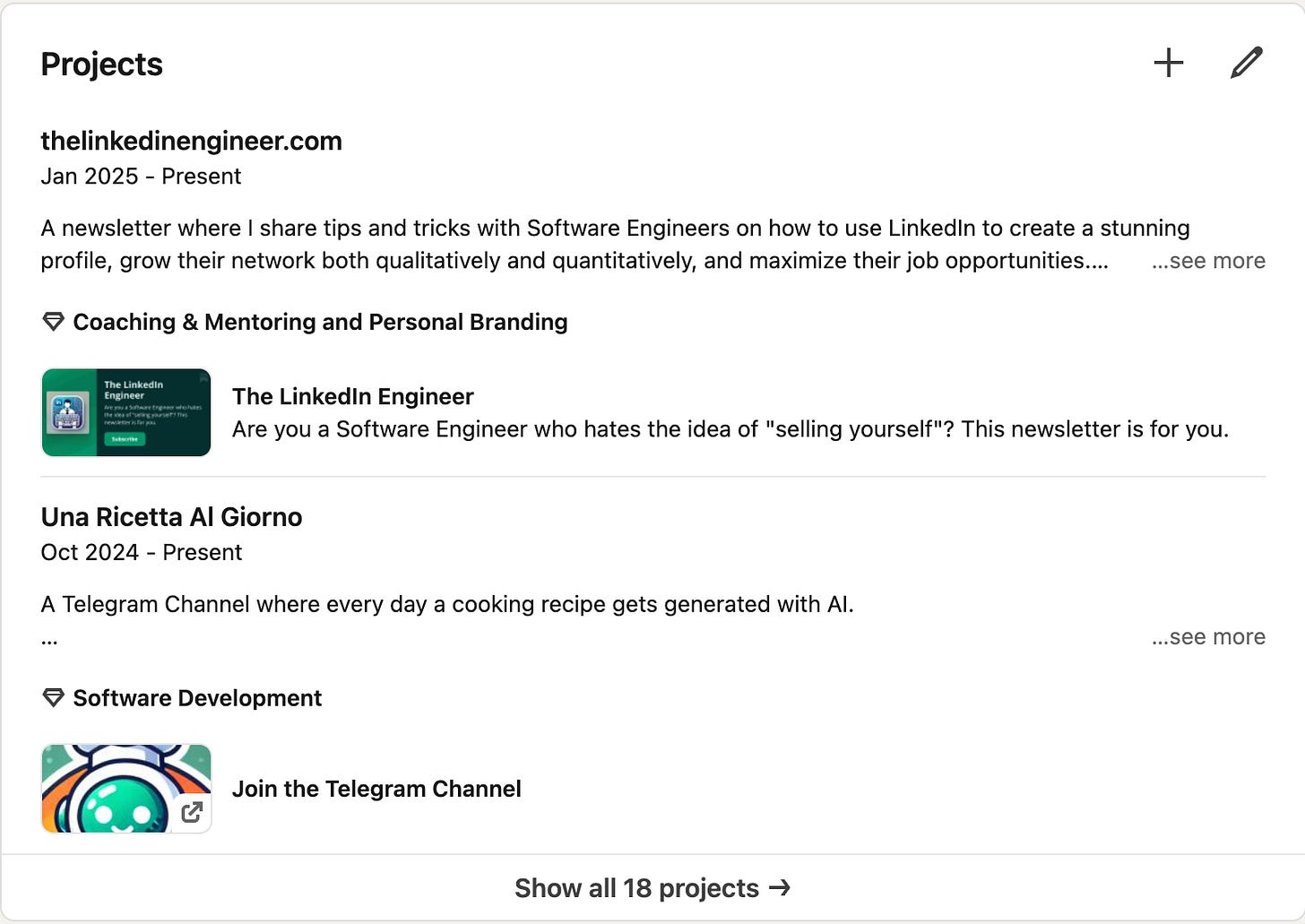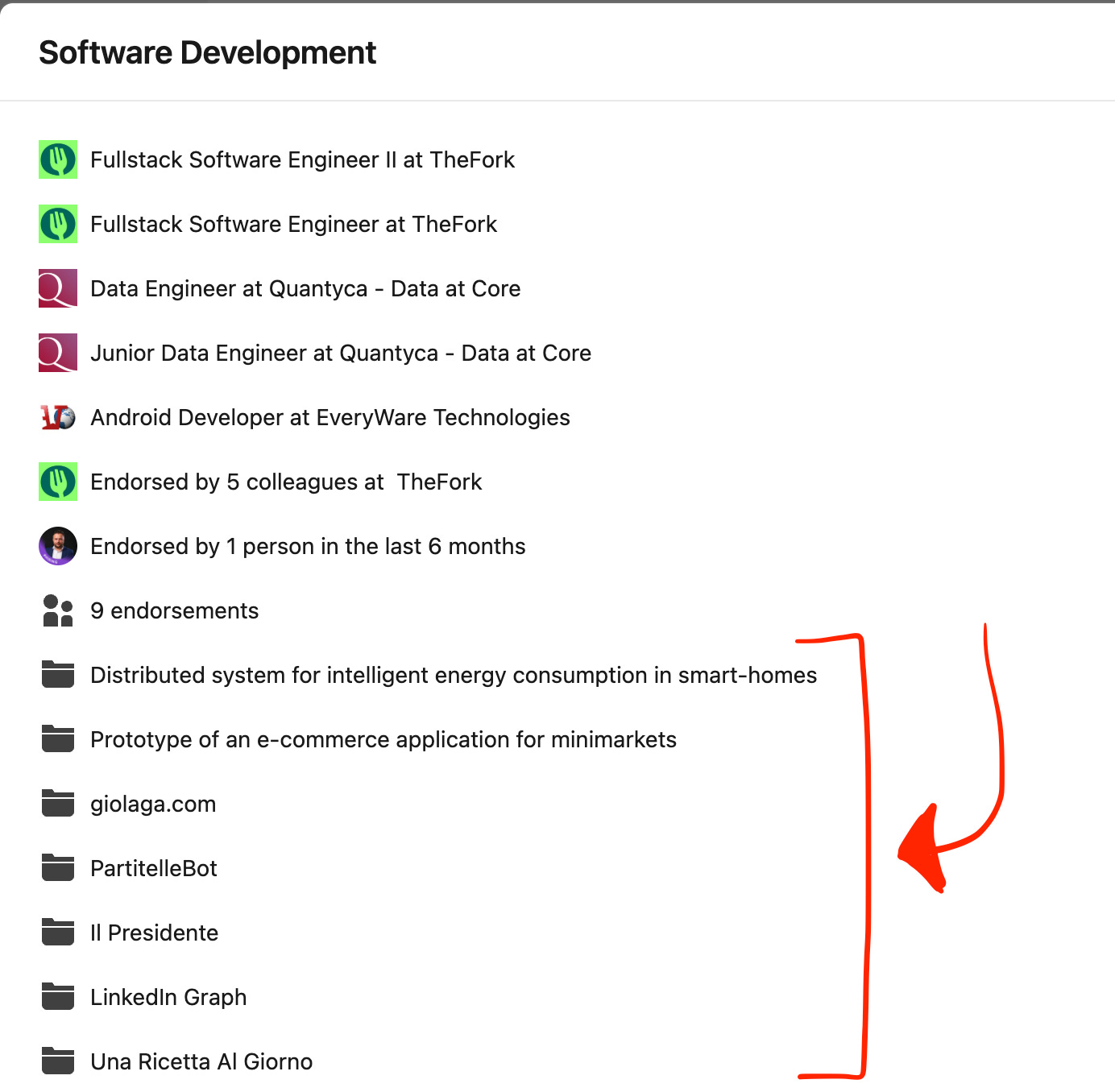How many times have you been told that it’s important to work on side projects?
As a Software Engineer, you know well that having a nice GitHub profile is an amazing calling card that companies look for.
But in this newsletter, you know that I’m not going to tell you how to choose the projects to work on. 🙅🏻♂️
That’s because I’ll be telling you how to make them stand out on your LinkedIn profile. 😏
Well... 🤔
Let’s take a step back to GitHub: I hope you have one. Right? (If not, make sure to create one and check out this great article with tips on how to make it visually appealing).
GitHub
First things first: you should highlight your GitHub profile.
How do we do that? 🤌🏻
As I had shared in my post about the “Featured” section
you can create a link, attach a beautiful image of your choice featuring maybe the GitHub logo (to make the card more clickable 😉), and redirect people to your profile.
This will instantly provide them with a shortcut to your GitHub, where you should organize the projects you’ll be showcasing on LinkedIn.
Your Projects live somewhere
Let’s take for instance your own website, which you should definitely consider a project. In that case we can expect it to be hosted on a domain (like giolaga.com in my case).
Guess what? Another link 🔗
And where do we have learned that links can go? Yes, again: the Featured section.
Aside from your website, if your projects are available somewhere and they can be reached through an url, make sure to highlight them!
“I am just a Student, and I don’t have side projects”
I remember a time when I was a student and didn’t have the time, inspiration (or maybe even the skills) to start side hustles.
However, one trick I used back then was to highlight all the practical parts I worked on for my University exams.
In the end, those are definitely projects to be proud of, and I’m sure they taught you valuable skills that will stay with you in the future.
Also, let’s be honest: recruiters don’t have always enough context to distinguish between University projects and independent ones. Play this to your advantage.
Don’t make the mistake of underestimating them just because they were exams you had to do, what matters is that you built practical and concrete experience on technologies that HRs might be looking for.
I even remember a recruiter once starting an interview by complimenting me on my experience, which was actually built on academic projects (but they didn’t know that).
The Projects section
Since we’re talking about projects, we can’t forget the Projects section, where you can list them.
My advise here is to make sure you:
provide all the details
always attach a media (and choose properly a thumbnail)
associate the project with an experience position (when possible)
add contributors (when applicable)
indicate a few key skills and make them recurrent
Let me spend a few important words on this last point: remember that each time you indicate a skill under a project, then the skill will be created automatically under your “Skills” section, with the associated project. Therefore, make sure to use a closed set of skills of your personal preference.
Here below, for example, you can see how choosing always “Software Development” leads to a long list of projects associated to the same skill, making that skill a lot more prominent and credible 👇🏻
Promote your projects externally
If you have a website, make sure to describe the same projects there. This will create a strong connection if someone jumps from your LinkedIn profile to your website (that you have wisely attached in the Featured section 😉).
Additionally, there are various channels where you can talk about your projects and increase their visibility.
For example, I’ll leave you with this subreddit ✍🏻
Put (especially) projects that failed
One of the biggest misconceptions is that only successful projects are worth mentioning.
I encourage you to abandon this mindset as soon as possible because it can lead to self-sabotage.
What you think others think:
"Oh, look at how many times this person failed—such a noob!"
What others probably think:
"Damn, look at how many times this person failed—such perseverance!"







